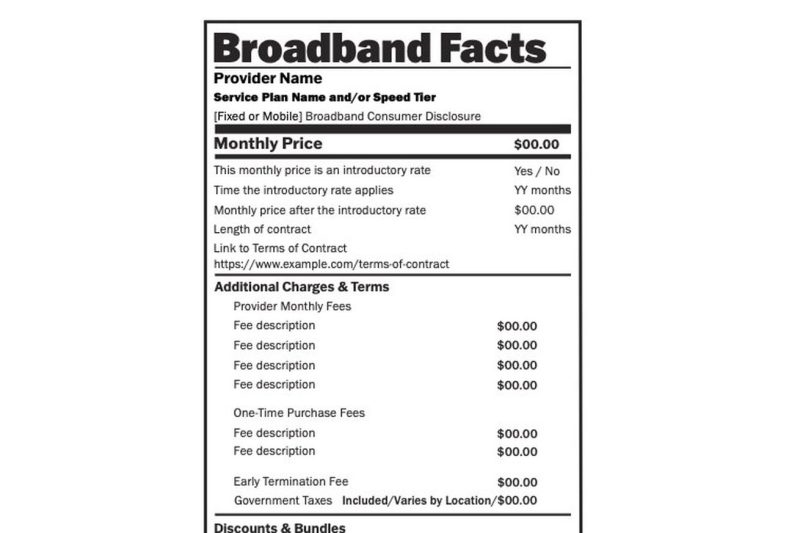In the digital age where high-speed internet is a necessity for many aspects of daily life, consumers have often found themselves overwhelmed by the complexity of broadband plans and the lack of clear information regarding their offerings. However, a recent development by the Federal Communications Commission (FCC) is set to change this landscape. Mandated nutrition labels for broadband plans are now being introduced, aimed at empowering consumers with transparent and easily digestible information about the services they are purchasing.
The FCC’s initiative to require broadband providers to include standardized nutrition labels with their plans is a significant step towards promoting consumer awareness and enhancing decision-making when it comes to selecting a suitable internet service provider. These labels will contain vital information such as the actual internet speeds offered, any data caps or limitations, and associated fees that may apply. By having this information presented in a clear and consistent format, consumers will be better equipped to compare different broadband plans and make informed choices based on their needs and preferences.
One key feature of these nutrition labels is the inclusion of a typical user section, which outlines the kind of internet activities that a standard user can expect to comfortably engage in with the respective broadband plan. This helps consumers gauge whether a particular plan aligns with their usage patterns, whether they prioritize high-speed streaming, online gaming, remote work, or casual browsing. Understanding how a broadband plan caters to specific usage scenarios enables consumers to match their requirements effectively, avoiding potential disappointment and overspending on unnecessary features.
Moreover, the FCC-mandated nutrition labels also touch on important aspects like contract terms, promotional rates, and any additional charges that may apply over the course of a subscription. By shedding light on these finer details, consumers can make more sound decisions in terms of budgeting and understanding the full cost of the service they are signing up for. This increased transparency reduces the likelihood of hidden fees catching consumers by surprise and fosters a more honest and fair relationship between providers and customers.
Another crucial benefit of the nutrition labels is the emphasis on customer support and service quality metrics. Information regarding a provider’s customer service reputation, responsiveness to issues, and overall satisfaction ratings will now be readily available on the labels. This allows consumers to factor in the quality of support they can expect to receive when encountering technical problems or seeking assistance, ultimately enhancing their overall experience with the chosen broadband service.
Overall, the introduction of FCC-mandated nutrition labels for broadband plans marks a positive shift towards a more consumer-centric approach within the telecommunications industry. By arming consumers with comprehensive and standardized information, these labels facilitate better decision-making, promote price transparency, and encourage healthy competition among providers. Moving forward, it is essential for both consumers and broadband companies to embrace these labels as a tool for fostering greater trust, accountability, and satisfaction in the ever-evolving landscape of digital connectivity.

